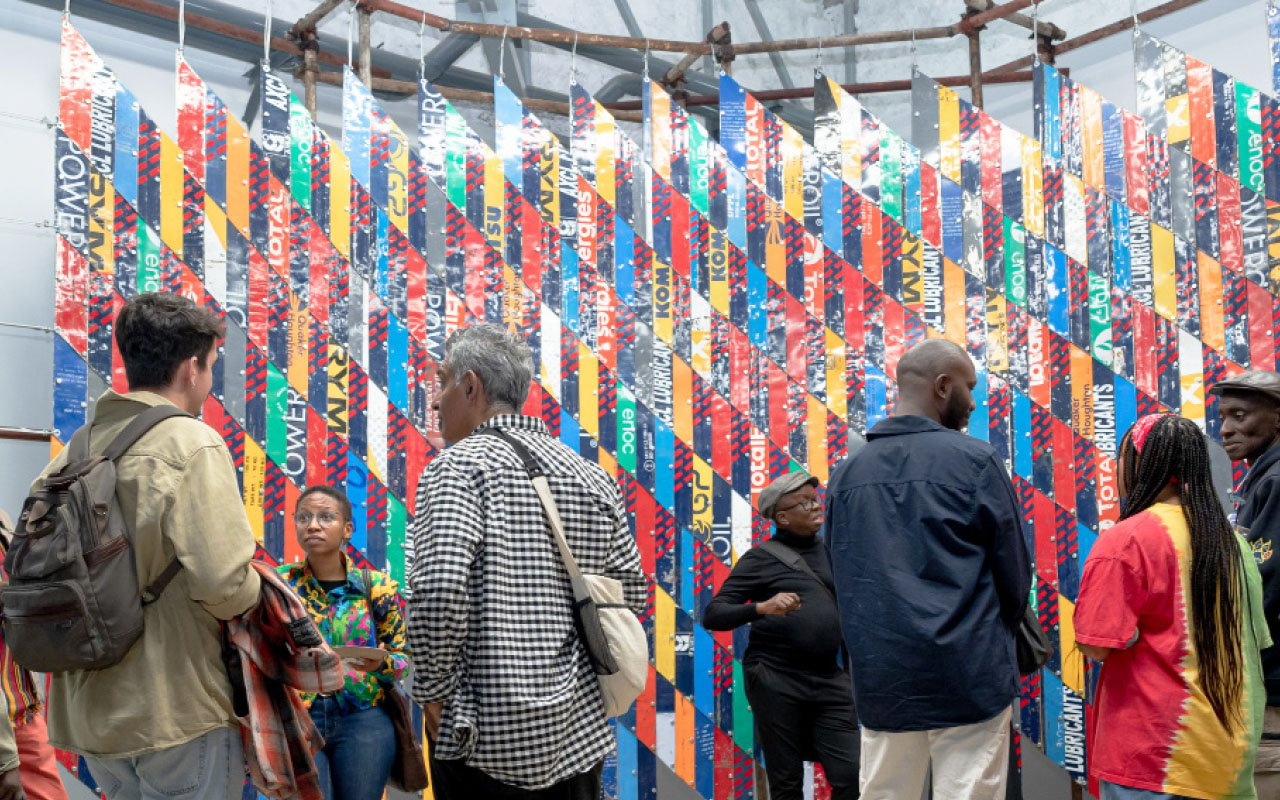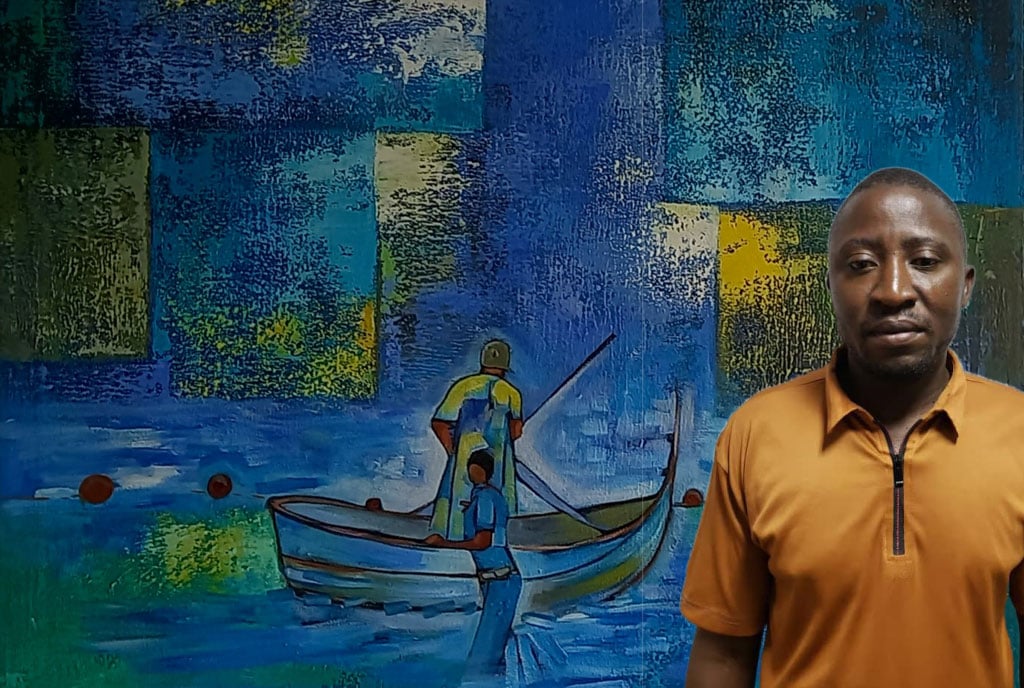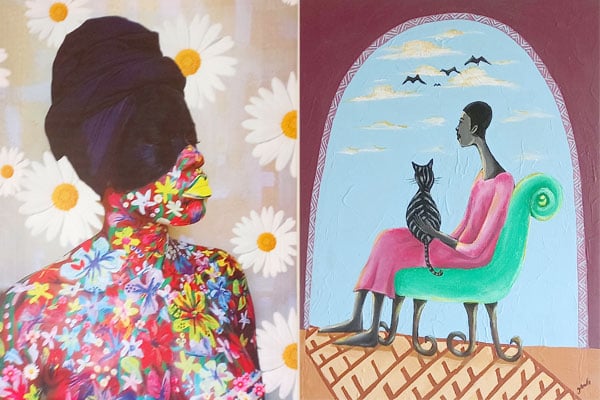
Samson Ssenkaba, alias Xenson, is one of the most intriguing creatives in Uganda. From being a spoken word artist, graffiti artist, painter, and sculptor, among others, he remains one of those creatives whose body of work is multidisciplinary and mindblowing.
Last weekend, the artist hosted his first-ever solo exhibition in Nairobi and his first institutional exhibition in East Africa.
According to a curatorial note, the exhibition focuses on sculpture and installation and features six newly created pieces that widen Xenson’s research of items and materials, as well as the stories they tell about the distinct cultural contexts from which they are derived.
Aptly titled Olidde Mu Pipa, English for You Have Eaten From the Barrels, its a wordplay for those that come late and have to be served with leftovers. However, in Xenson’s interpretation, the leftovers are in barrels, which at many events act as rubbish bins.
Nairobi has always been the heart of East Africa’s art scene. With a relatively larger number of collectors, many artists, be they visual artists, singers, or filmmakers, the city is always part of those target markets to work with.
Xenson has in the past had works exhibited in Nairobi, but in other capacities; for instance, in 2010, he beat 11 other fashion designers from Kenya, Tanzania, Uganda, and Ethiopia in a show that required designers to showcase six original designs.
The exhibition
But Olidde Mu Pipa is about him and the continuation of materials usually used to package things. He has since teased the concept in the Kampala Art Biennale in 2016 and later in a solo exhibition last year.
But what separates the two is that they looked at the process of packaging and transportation, and this particular one delves into materials that transport revered liquids such as oil and wine and later end up in poor people’s homes as dustbins and charcoal stoves.
In his practice, Xenson has adopted these steel barrels and their offshoots as a support for painting and as building blocks for the sculptures and installations that make up this exhibition.
Xenson has a knack for storytelling, be it through poetry, writing, or creatively putting material together. In this exhibition, his works made out of barrels still bear logos from the original users, such as Total, Power Oil, Lubricants, and other mainly petroleum companies.
Of course, at first sight, these logos and original branding add vibrance and colour to the showcase, but above all, they represent the rate at which Africa has imported to the point of creating original lifestyles out of imports.
The African story
For instance, most African markets and food stalls have kalayi/ saucepans, made out of cut barrels, followed by charcoal stoves and suitcases.
Most of these did not exist before someone started importing something into barrels, and yet today, they are a big part of different African settings in very different domestic forms.
This transformation of imported goods into everyday essentials reflects the adaptability and resourcefulness of African communities in utilising what is available to create practical solutions. The exhibition, however, seems to wonder whether these solutions are the best or if we are simply using the only solution available. It also highlights the influence of external factors on shaping local cultures and lifestyles in Africa. Still leaving open the question of whether the influences are for the better or for the worse.
The title Olidde Mu Pipa seems to tell Africa that after the industrial revolution and the exploration of the continent happened, Africa seemed to get crumbs out of it all.
Thus, the title of eating from the trashcan after arriving late to the party. Of course, this is not the first time Xenson has used installation art or paintings to talk about the African situation or Uganda. In his 2022 exhibition, Lumiima Mawugwe talked about the continent at the junction of Covid-19 and politics, while in other exhibitions he tackled Africa’s continued voluntary slavery in the west.
About the artist
Samson Ssenkaaba is a Kampala-based multimedia artist who uses sculpture, installation, performance, poetry, fashion, and painting to engage with questions of identity, consumerism, and the global circulation of culture against the backdrop of a dystopian postcolonial present.
He deliberately deploys a candied aesthetic of vivid colours and graphic patterns, simultaneously enabling and rejecting identification with his subjects, aiming for visual narratives that reflect the complexity of contemporary culture. Xenson often uses found and recycled materials, responding directly to what his environment offers him and integrating his work into global discourses surrounding humanity’s impact on the natural environment.
Samson Ssenkaba, alias Xenson, is one of the most intriguing creatives in Uganda. From being a spoken word artist, graffiti artist, painter, and sculptor, among others, he remains one of those creatives whose body of work is multidisciplinary and mindblowing.
Last weekend, the artist hosted his first-ever solo exhibition in Nairobi and his first institutional exhibition in East Africa.
According to a curatorial note, the exhibition focuses on sculpture and installation and features six newly created pieces that widen Xenson’s research of items and materials, as well as the stories they tell about the distinct cultural contexts from which they are derived.
Aptly titled Olidde Mu Pipa, English for You Have Eaten From the Barrels, its a wordplay for those that come late and have to be served with leftovers. However, in Xenson’s interpretation, the leftovers are in barrels, which at many events act as rubbish bins.
Nairobi has always been the heart of East Africa’s art scene. With a relatively larger number of collectors, many artists, be they visual artists, singers, or filmmakers, the city is always part of those target markets to work with.
Xenson has in the past had works exhibited in Nairobi, but in other capacities; for instance, in 2010, he beat 11 other fashion designers from Kenya, Tanzania, Uganda, and Ethiopia in a show that required designers to showcase six original designs.
The exhibition
But Olidde Mu Pipa is about him and the continuation of materials usually used to package things. He has since teased the concept in the Kampala Art Biennale in 2016 and later in a solo exhibition last year.
But what separates the two is that they looked at the process of packaging and transportation, and this particular one delves into materials that transport revered liquids such as oil and wine and later end up in poor people’s homes as dustbins and charcoal stoves.
In his practice, Xenson has adopted these steel barrels and their offshoots as a support for painting and as building blocks for the sculptures and installations that make up this exhibition.

Xenson has a knack for storytelling, be it through poetry, writing, or creatively putting material together. In this exhibition, his works made out of barrels still bear logos from the original users, such as Total, Power Oil, Lubricants, and other mainly petroleum companies.
Of course, at first sight, these logos and original branding add vibrance and colour to the showcase, but above all, they represent the rate at which Africa has imported to the point of creating original lifestyles out of imports.
The African story
For instance, most African markets and food stalls have kalayi/ saucepans, made out of cut barrels, followed by charcoal stoves and suitcases.
Most of these did not exist before someone started importing something into barrels, and yet today, they are a big part of different African settings in very different domestic forms.
This transformation of imported goods into everyday essentials reflects the adaptability and resourcefulness of African communities in utilising what is available to create practical solutions. The exhibition, however, seems to wonder whether these solutions are the best or if we are simply using the only solution available. It also highlights the influence of external factors on shaping local cultures and lifestyles in Africa. Still leaving open the question of whether the influences are for the better or for the worse.
The title Olidde Mu Pipa seems to tell Africa that after the industrial revolution and the exploration of the continent happened, Africa seemed to get crumbs out of it all.
Thus, the title of eating from the trashcan after arriving late to the party. Of course, this is not the first time Xenson has used installation art or paintings to talk about the African situation or Uganda. In his 2022 exhibition, Lumiima Mawugwe talked about the continent at the junction of Covid-19 and politics, while in other exhibitions he tackled Africa’s continued voluntary slavery in the west.
About the artist
Samson Ssenkaaba is a Kampala-based multimedia artist who uses sculpture, installation, performance, poetry, fashion, and painting to engage with questions of identity, consumerism, and the global circulation of culture against the backdrop of a dystopian postcolonial present.
He deliberately deploys a candied aesthetic of vivid colours and graphic patterns, simultaneously enabling and rejecting identification with his subjects, aiming for visual narratives that reflect the complexity of contemporary culture.
Xenson often uses found and recycled materials, responding directly to what his environment offers him and integrating his work into global discourses surrounding humanity’s impact on the natural environment.
Additional information from the internet.

